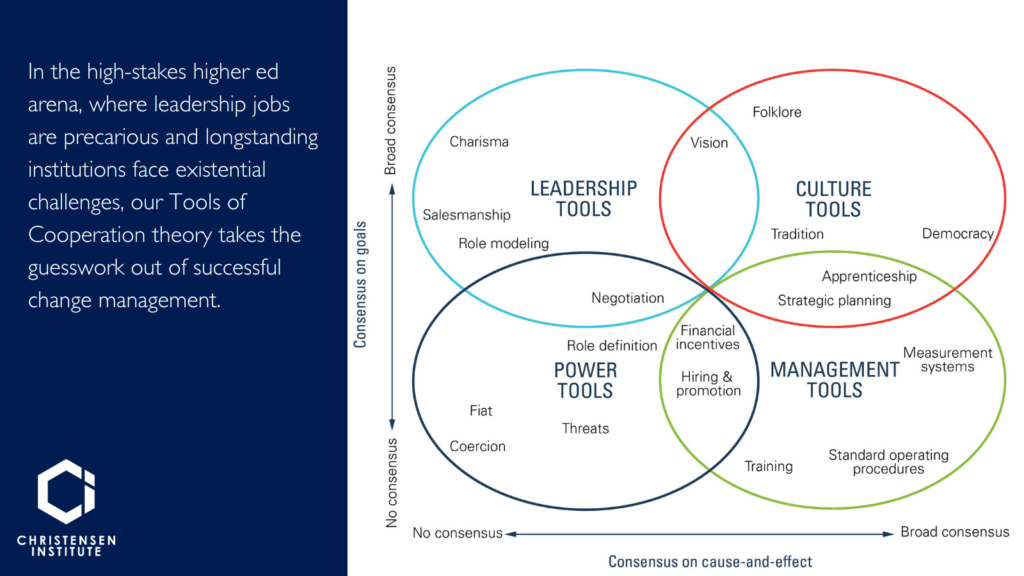How to get cooperation and agreement to move an institution forward is one of the trickiest parts of the higher ed leader’s job. Yet moving forward must be a priority as higher education copes with the emergence of technology-enabled learning solutions while maintaining an increasingly expensive traditional educational model. Add to this environment a number of stressors—from the challenges of educating during the pandemic, to shrinking numbers of high school graduates, to turbulent debates over what schools can and can’t teach and what faculty can and can’t say—and it’s imperative to chart strategic paths forward rather than stay put or drift. There’s arguably never been a more difficult time to be a leader of a higher education institution. The average tenure of a college president has consistently and steadily declined over the last couple of decades. It’s no longer unusual to see presidential tenures end after three to five years.
Against this backdrop, a theory from our research on innovation can help leaders. It’s a theory about what tools to use when there are varying levels of agreement within an organization. Used as a lens to better understand causal mechanisms, the theory reveals that not all the tools available to leaders work in all circumstances. To successfully chart a course forward, leaders need to understand the level of agreement inside their college or university and then use the right tools to forge ahead.



